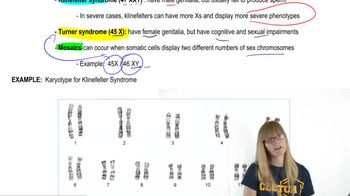Mating between a male donkey (2n = 62) and a female horse (2n = 64) produces sterile mules. Recently, however, a very rare event occurred—a female mule gave birth to an offspring by mating with a horse.
Determine how many chromosomes are in the mule karyotype, and explain why mules are generally sterile.






